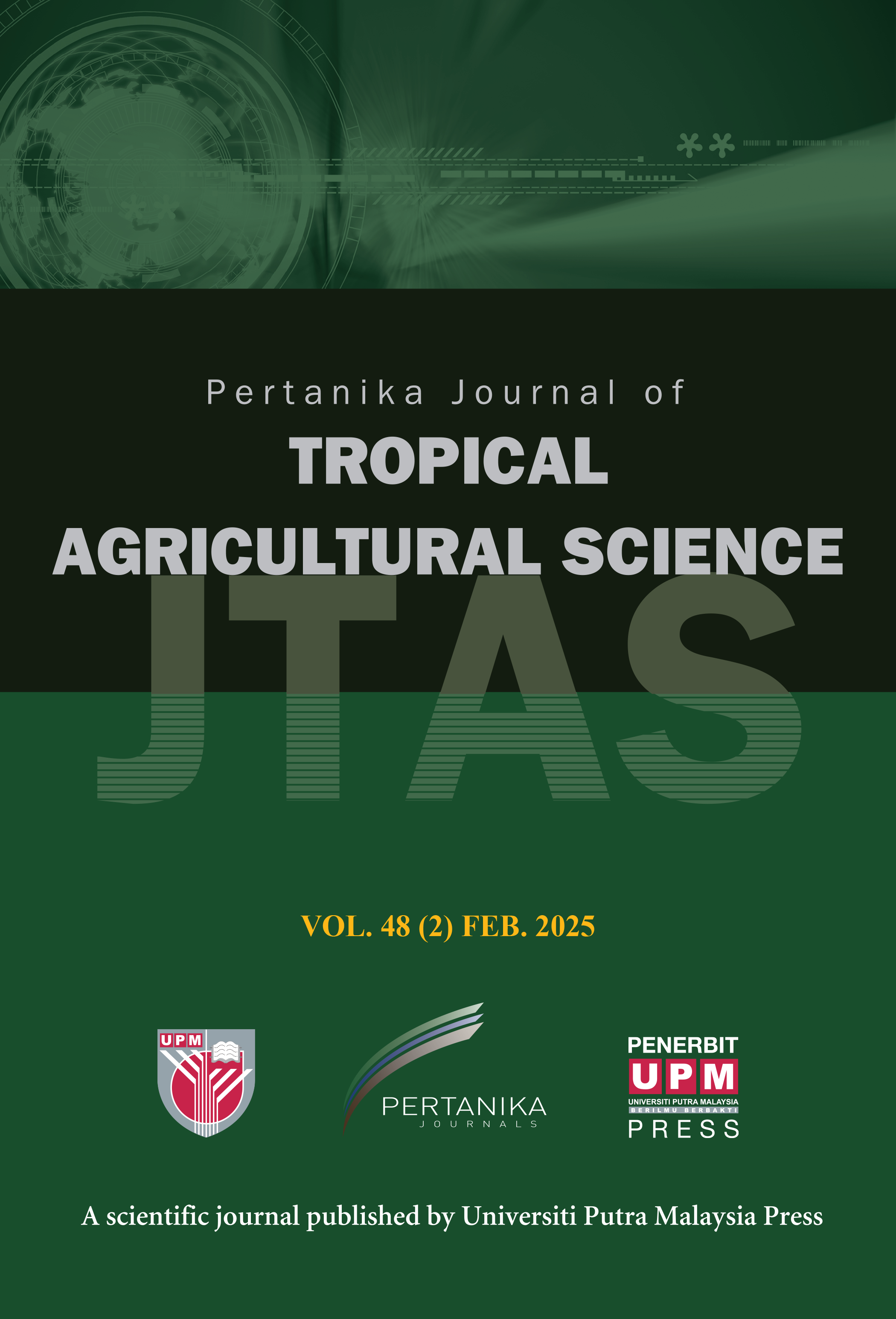PERTANIKA JOURNAL OF TROPICAL AGRICULTURAL SCIENCE
e-ISSN 2231-8542
ISSN 1511-3701
Optimization of Harumanis Mango Leaves Extract for Enhanced Pharmacognostic Profile Using Response Surface Methodology Approaches
Ryan Vitthaya Peron, Amirul Ridzuan Abu Bakar, Mohd Asraf Mohd Zainudin, Ahmad Mukhlis Abdul Rahman, Nik Muhammad Azhar Nik Daud, Mohd Sharizan Md Sarip and Nazar Mohd Zabadi Mohd Azahar
Pertanika Journal of Tropical Agricultural Science, Pre-Press
DOI: https://doi.org/10.47836/pjtas.48.5.05
Keywords: Dynamic maceration, Harumanis leaves, pharmacognosy, phytochemicals, response surface methodology
Published: 2025-08-07
Harumanis mango (Mangifera indica var Harumanis) is renowned for its fruit; however, its leaves remain an underexplored resource for therapeutic potential. Although other mango varieties have been studied for their medicinal properties, limited research has focused on the bioactive profile of Harumanis mango leaves, creating a critical knowledge gap. Hence, this study aims to fill the gap by optimizing the extraction of bioactive compounds from Harumanis leaves using dynamic maceration with ethanol and methanol as solvents. Phytochemical screening identified the presence of polyphenols, which were further validated by FTIR spectroscopy. Quantitative analysis revealed high levels of flavonoid and phenolic contents in both ethanolic and methanolic extracts, comprising total phenolic contents of 60.58 ± 0.005 and 36.73 ± 0.003 µg/g, respectively, and total flavonoid contents of 58.73 ± 0.015 and 46.25 ± 0.003 µg/g, respectively. The antioxidant evaluation of the ethanolic extract showed IC50 values of 52.905 ± 1.12 μg/mL, while the methanolic extract showed 84.649 ± 0.87 μg/mL; additionally, antibacterial tests further supported their therapeutic potential. These findings highlight the promising potential of these extracts for the development of natural therapeutics. The high concentrations of polyphenols and their bioactivity underscore the medicinal value of Harumanis leaves, highlighting their potential for use in herbal medicine. Overall, this study fills a crucial research gap, showcasing the untapped potential of Harumanis leaves as a natural resource for alternative therapies and unlocking new possibilities for innovative applications in the industrial and pharmaceutical fields.
ISSN 0128-7702
e-ISSN 2231-8534
Share this article
Recent Articles

